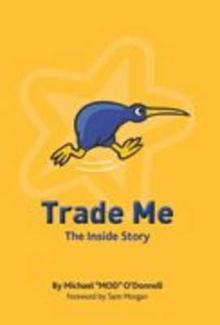This time a year ago I was feeling very optimistic about 2010. After we reached a real low point in September 2009 we saw the market improve and literally within 3 months things were heading in the right direction again. My own optimism was shared by the building industry and we saw 2010 get off to a great start with January, February and March all showing steady improvement. Then in April the wheels started to fall off again!
While this may make it sound as though 2010 was a bad year i have to be honest and say while it didn’t turn out as expected I am generally happy with the results from another challenging year in business.
Anyone who knows me, knows I like to get things done so it is always interesting to review what was achieved to help provide a baseline for setting realistic goals for a New Year.
Without wanting to bore you completely below are some highlights (and low lights) for 2010:
As outlined above the NZ Building Industry picked up for Oct 09 – Mar 10 but then dropped away again. Building Consents hit a major low in October and while signs are pointing in the right direction consent continue to be at low levels.
This indicator translated to low sales for Graphisoft New Zealand, however, with our eyes on the future we have sustained our staffing levels and look forward to an improvement in 2011.
From a marketing perspective we take a medium to long term view and invest heavily in eduction (see below). Marketing needs a continual focus especially during a down turn in the market and we have continued to invest heavily in this regard.
ArchiCAD 14 was released in June and took inter-disciplinary BIM Collaboration to a new level. This in conjunction with the GRAPHISOFT BIM Server released with ArchiCAD 13 provide extremely effective communication of information rich building models.
Cadimage had a big year and again managed to grow sales year-on-year. While growth was single digit it is still a remarkable achievement all things considered. More pleasing was to see that total sales in the last three years are triple what they were in the first three years of this business.
We pushed through $1 million USD in export sales during the year and also launched our new branding.
The branding has been well received though we still have a long way to go with it. Working with BRR at the strategic level has proved interesting and enjoyable.
New Zealand Trade and Enterprise have continued to support our global marketing efforts and we entered the fourth year of our Market Development Grant. Funds were used for strategic branding, translation and market visits.
Travel
2010 was a reasonably light year for travel for me though I did fly around the world twice and visited 9 countries.
In April the GRAPHISOFT IPC was held in Budapest and was all good until a certain volcano impacted our return trip – this added 3 additional countries to those I had planned to visit.
Septembers trip was less eventful from a interruption perspective but I crammed a lot into 12 days visiting San Francisco, Houston, Nottingham, London, Budapest and Oslo.
Education
As outlined above GSNZ continued investing in education with 2010 marking the third year of our involvement in the NZIA Graphisoft Student Design Awards – this time visiting Wellington.
We were also stoked to see ArchiCAD has been used extensively in the design of the FirstLight House which has won a place in the Solar Decathlon. This is a remarkable achievement and we are proud to be a sponsor as the team prepares to take their house to Washington DC to compete.
Cadimage Group
From an overall perspective our continued strategy of building both an NZ focused business and a global business in parallel is proving a solid strategy. Our continues global growth has helped balance the downturn in NZ at just the right time – we await the time where things align perfectly so we can explore some new growth opportunities.
I have enjoyed the step we took with creating a ‘proper’ board of directors and appointing Lance Wiggs as a director. The regular meetings have been both productive and stimulating and provided a real focus for working on the business. Our final meeting for 2010 saw the presentation of our strategic plan and budget for 2011 which is something I am very excited about.
2011
January 2011 marks six years for me as Managing Director of the Cadimage Group. The last six years have flown by and the business has changed remarkably in that time. There have been highs and lows and I believe I have learnt a lot from both the positives and the negatives.
2011 also marks a new era in Cadimage with some high level changes to [hopefully] take the pressure off me and also provide opportunities for other key staff to step up. While I remain ultimately responsible for the delivery and development of our strategy I believe my team will take big steps and the business will improve immeasurably as a result.
While I still will be full time for Cadimage I am on the lookout for opportunities both to grow Cadimage, but also opportunities for me to offer my expertise to other start-ups and businesses.
There are many more exciting changes in store for 2011 which we will share with you as we go. I think the review above shows we can achieve a lot in a year so I expect 2011 to be no different.


